Facades of Almora: Carved Survivors

Typical domestic construction in Nainital, Uttarakhand. (All photos by Scott Ponemone)
Introduction
I have to admit that my first week in India was disappointing regarding the architecture I saw. I came with visions of exotic forms, but what I saw was rebar, cement and brick structures. I was losing hope of recording Indian architectural details to add to my glossary of patterns that so stimulate much of my own art making. While not particularly inspiring, I photographed the railings (above) in Nainital because that was about the best I could find up to then.
Maybe preserving historic domestic buildings hadn’t risen to a public priority in a developing country like India. Think how many wonderful buildings were lost in the U.S. well into the 1970s. Think of Robert Mill’s designed 1817-19 Waterloo Row in Baltimore. Those 12 houses were bulldozed in 1967.
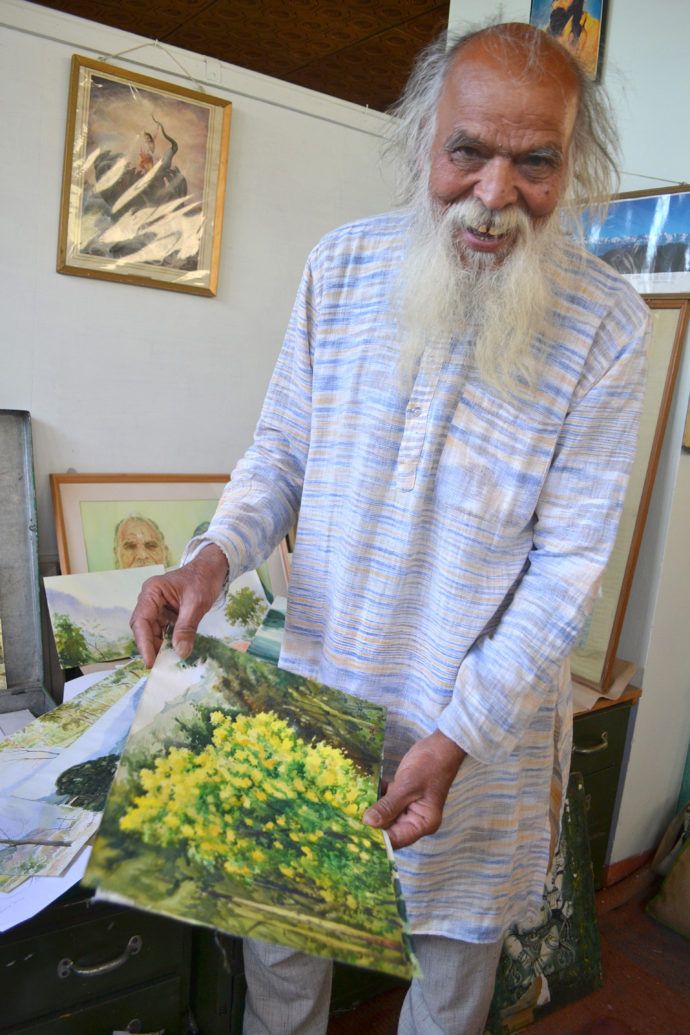
Yashodhar Mathpal showing one of his watercolors.
Fortunately I got to meet a gentleman who has been greatly interested in preserving India’s artistic heritage. Dr. Yashodhar Mathpal (born 1939) is a watercolor artist and a recognized expert in prehistoric rock paintings. (Here’s a link a short Times of India article: http://blogs.timesofindia.indiatimes.com/past-prism/museum-men-of-bhimtal-part-i/ and a link to one of his books: https://books.google.com/books/about/Prehistoric_Painting_Of_Bhimbetka.html?id=GG7-CpvlU30C)
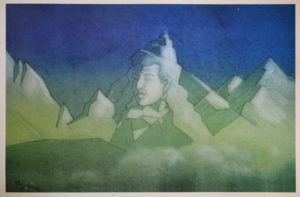
Yashodhar Mathpal, Full Moon in the Heaven, watercolor, 2014, 37 x 24 cms
While we had a lengthy discussion about artistic inspiration (that I wish I had recorded), what left a lasting impression was found in his private museum at his home in Bhimtal, not far from Nainital. It was a two-story affair. The top level was devoted to his own art. While many of his paintings are of the illustrative nature–almost social realism in style–of rituals and daily life of the Kumaoni people of Uttarakhand, I found his small abstract watercolors that imagine Hindu gods becoming one with the Himalayas to be his most personal and affecting work.
The floor below was devoted to Mathpal’s efforts to preserve Kumaoni crafts traditions. For the most part by contemporary museum standards it was a disheartening affair. Dusty, poor lit, barely labeled, the objects he collected are nearly bereft of historical/socialogical context. Yet, this was the first place is saw aipan designed objects. (I devoted a recent blog post to aipan and how I tried to incorporate it into my own art: http://www.scottponemone.com/lessons-in-aipan/) Moreover, here is where I first saw pieces of carved wood that once were part of decorations for doorways and windows of the region.
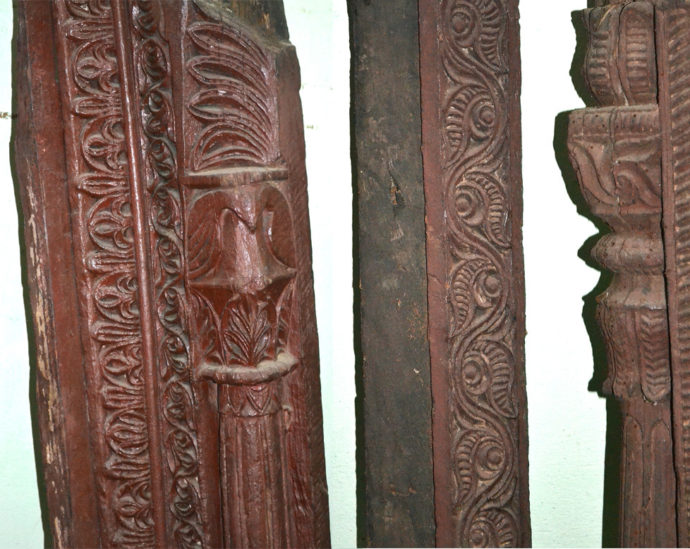
Pieces of carved and painted wood on display in the Mathpal museum.
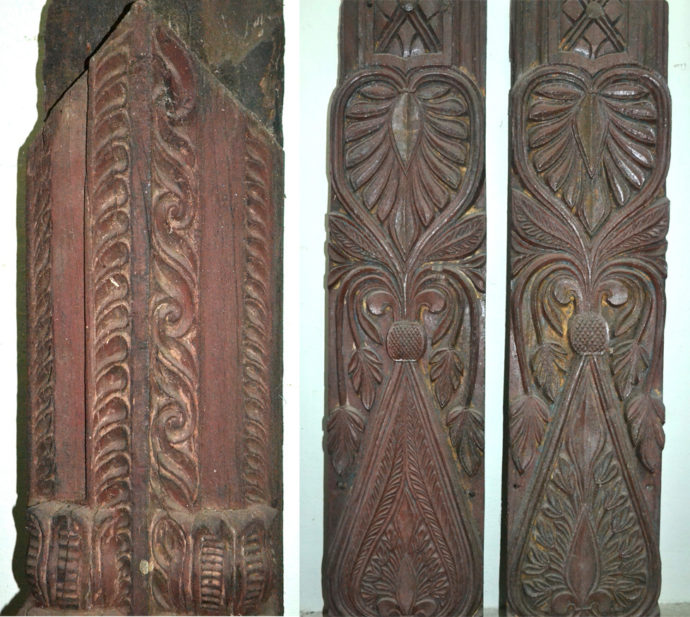
These pieces are terrific, particularly the running repeats, so reminiscent of Greek and Roman art. While I photographed what was there, for me it didn’t really count until I could witness this tradition in situ. But where?
Online, there’s not much on Uttarakhand wood carving. The Crafts and Artisans of India website (http://www.craftandartisans.com/) has this say on the subject:
The artists from the hills are skilled in encapturing the natural beauty of Kumaon and Garwhal through the craft of wood carving. The craft has declined over the current. However, in the olden days, carving on the main entrance door was considered a status symbol. The family which had more carving over the doors was considered to be wealthier or the family had high status in the society. With the increase in expenses and cost of living there are very few houses which now have the carved wooden doors. The existing designs today are of birds, floral and fauna, water mammals etc. In the hills today also many old houses display the beautiful art of carving over the window panels. These artists highlight natural beauty in their carvings. The designs have carvings of birds, flowers, mountains, fruits and even the human figures. The people of hills are very god fearing and this can be witnessed in their art as many images of god and goddesses can also be seen accompanying the craft. The ornamental wood carving on the front doors are known as Kholi in the local language.
The following weekend, I was in Almora, an important small city in the heart of the Kumoan region. (For my travels I was dependent on the itinerary of the directors of the PECAH residency program, in which I was one of six participating international artists.) On arriving, our PECAH hosts recommended exploring the bazaar that ran for blocks parallel to the principal vehicular roadway. It was quite a colorful and lively affair. The women artists in our group were fascinated by the fabric shops, where a rainbow of materials could be turned into saris overnight by the tailors in the next stall. However, what I wanted to see was along the quieter, more residential part of the lane. There, I was told, were many houses adorned with the carvings I sought.
It was nearly dark by the time we walked along this part of the bazaar, but, emphatically yes, here was a veritable museum of Uttarakhand facade carvings. Without a doubt, I would return with camera in hand the next morning.
GALLERY
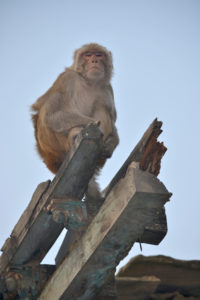
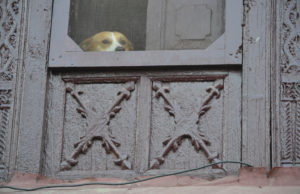
At dawn, the bazaar’s street was nearly quiet. The previous day’s litter and filth had been swept into neat piles. A few cattle grazed on garbage. A couple of shopkeepers even left them handouts. Dogs lazily scratched themselves. Rhesus monkeys observed it all from their perches. In fact at least one dog watched me progress up and down the lane. Thank goodness, my camera, which I failed to notice the night before was low on batteries, kept working as long as I put the focus on manual.
In this gallery I’ll start with street views, followed by views across the facades of individual buildings, ending with closeup shots.

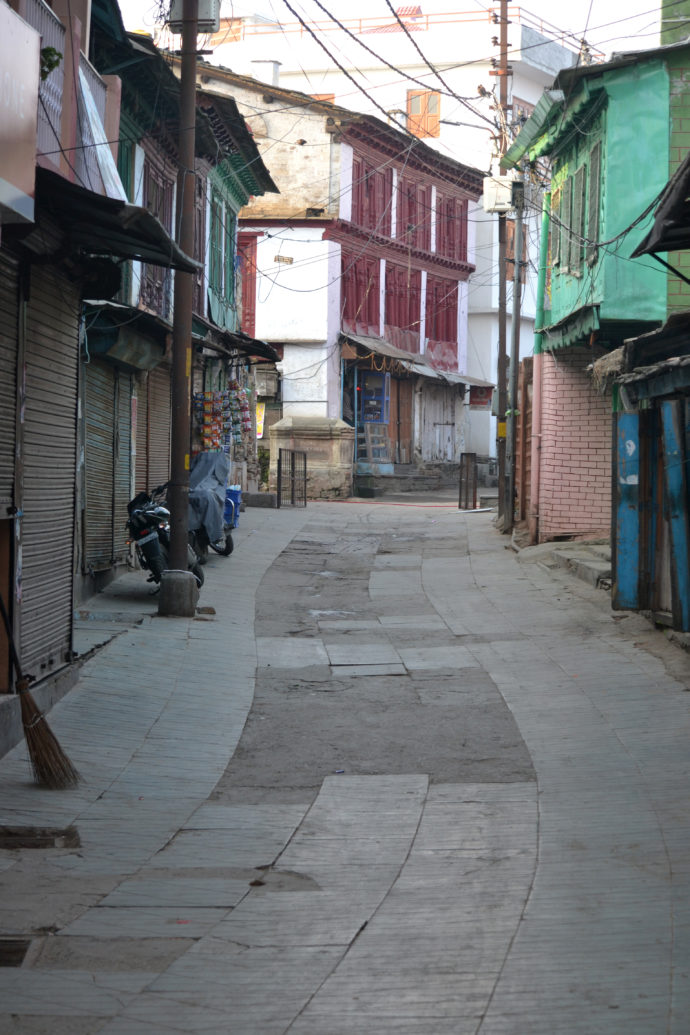
Note the open gate at the top of the alley’s curve. During shopping hours it’s closed to traffic.
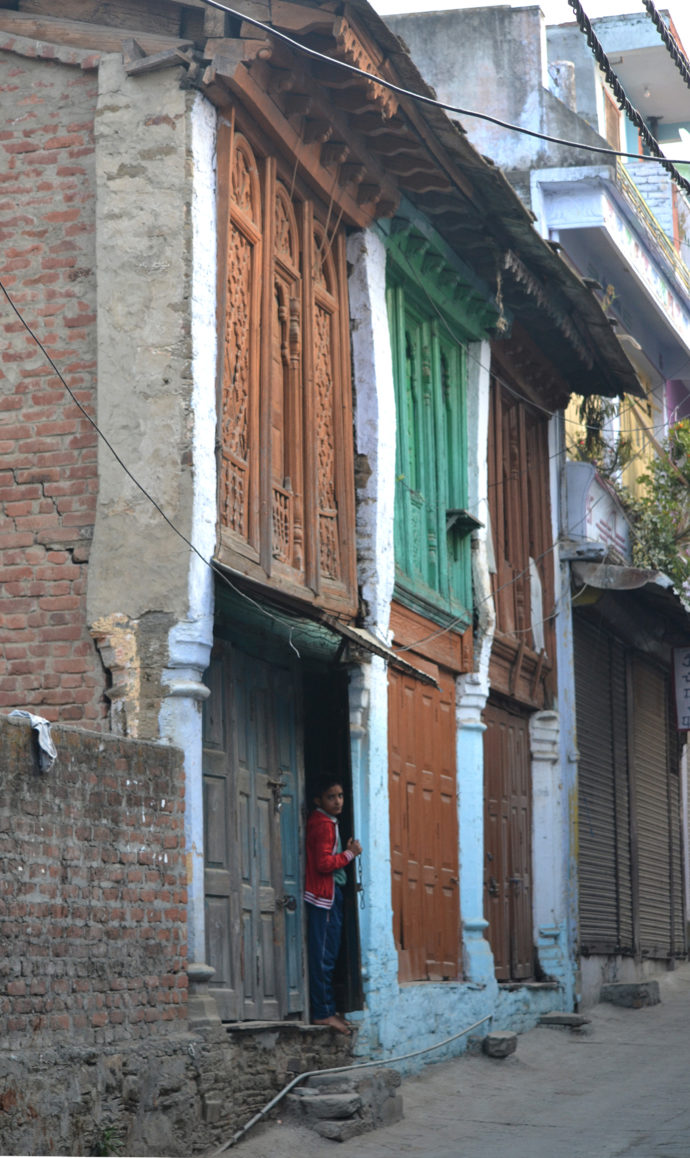
Despite the tradition of competitively carved doorways that I read about, in Almora the ground-level woodwork was plain and the doors themselves exhibited only raised panels. All of the fancy carvings was on the second- and third-floor facades.
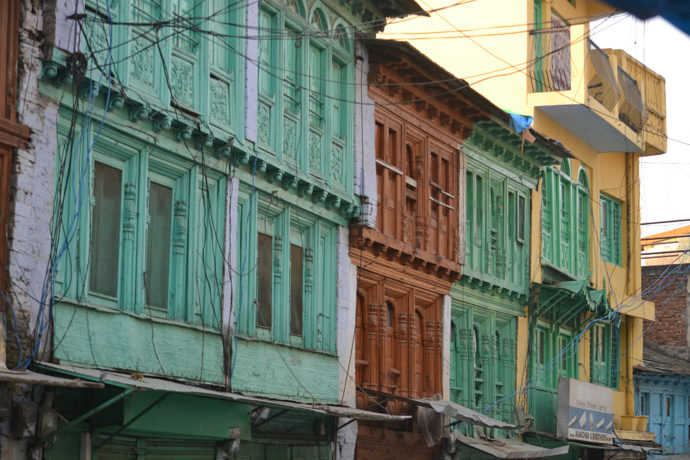
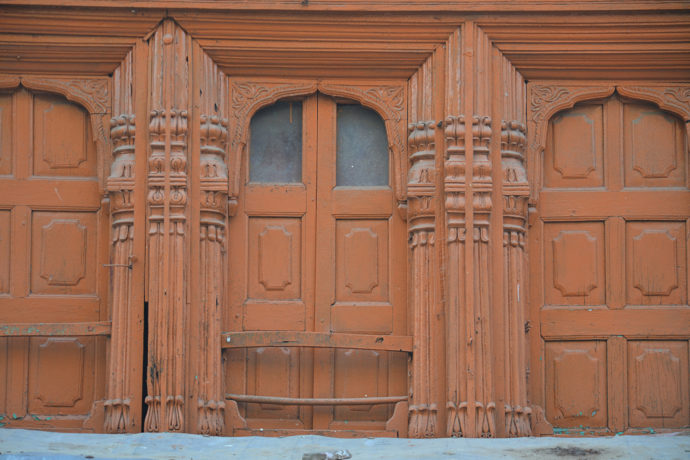
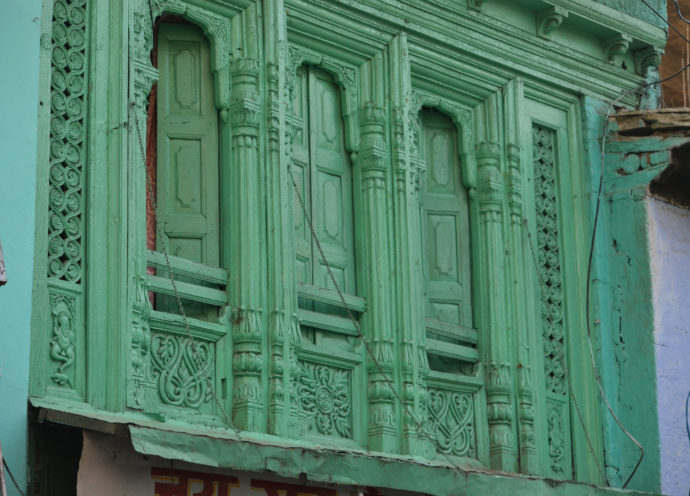
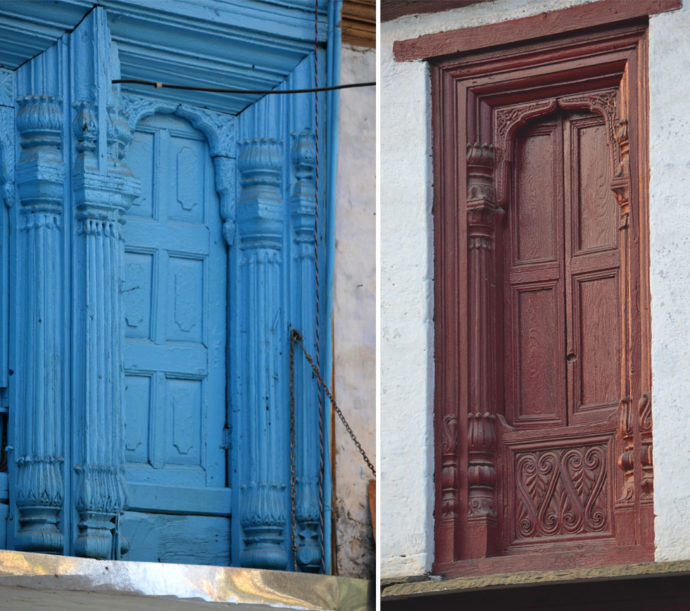
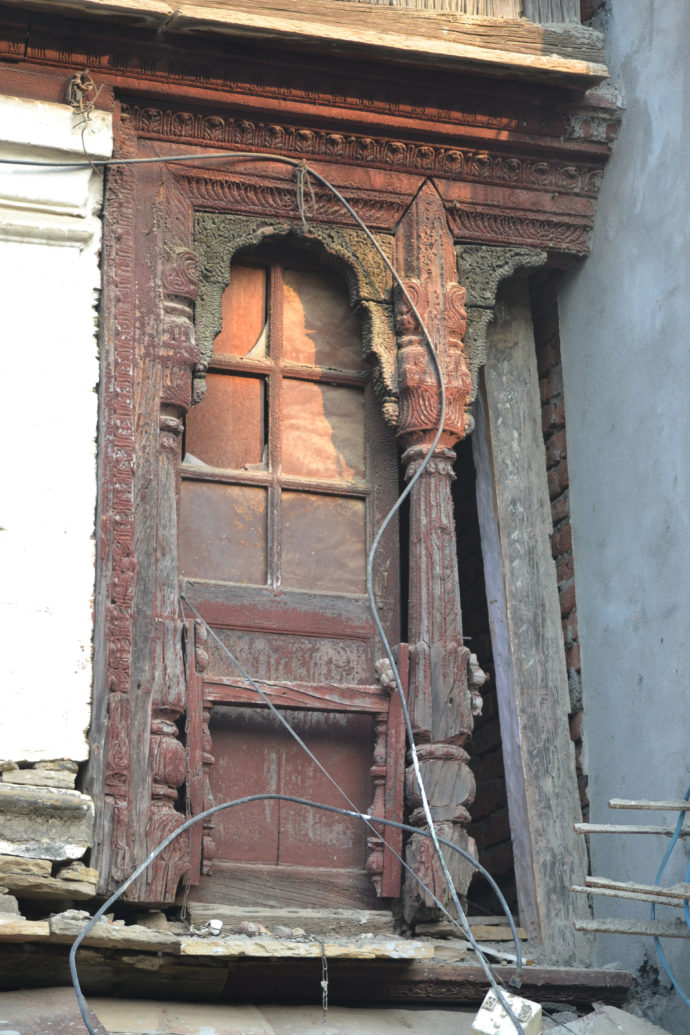
Unfortunately, this facade was cut in half, and the half that remained was left to decay.
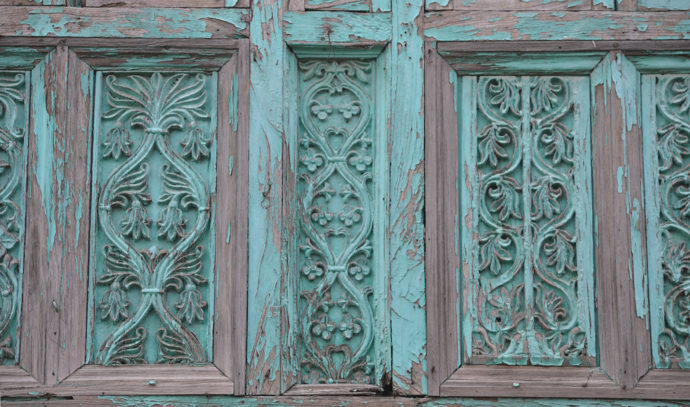
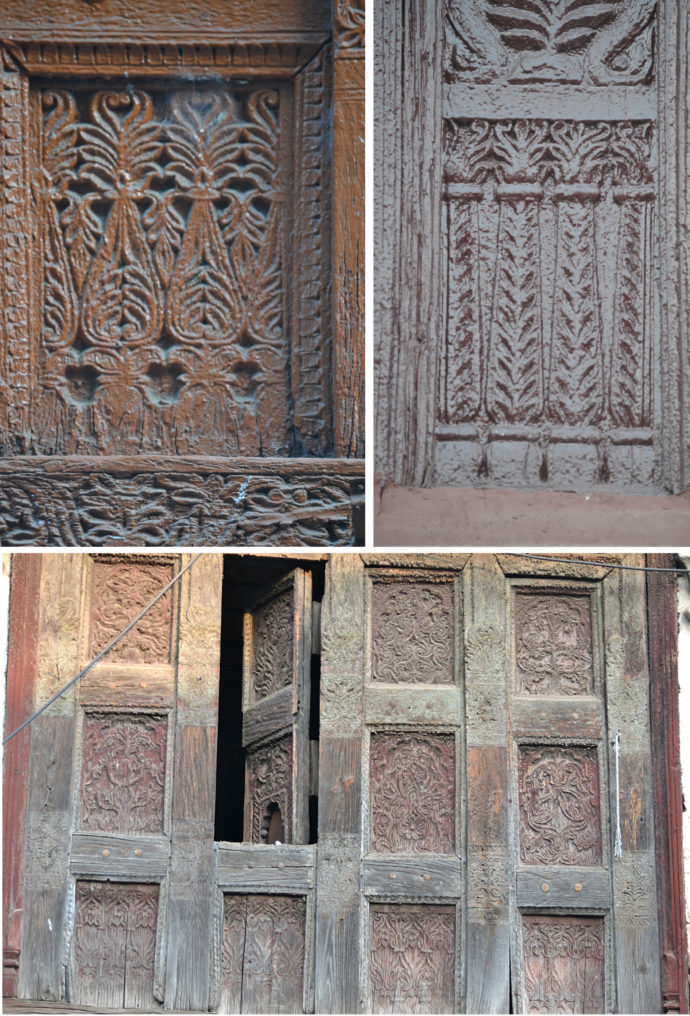
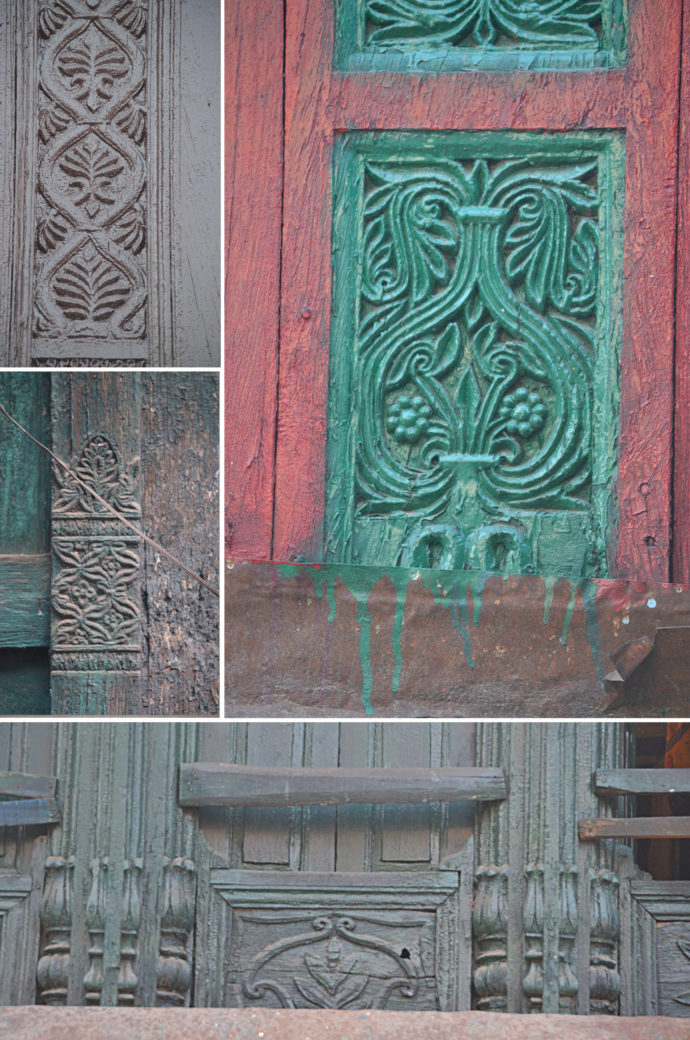

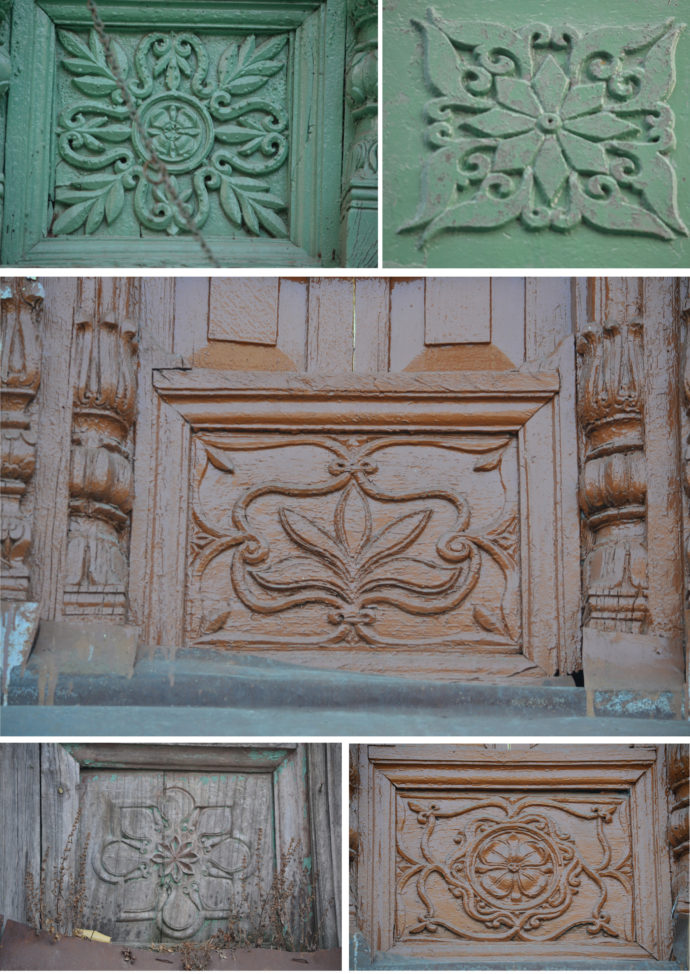
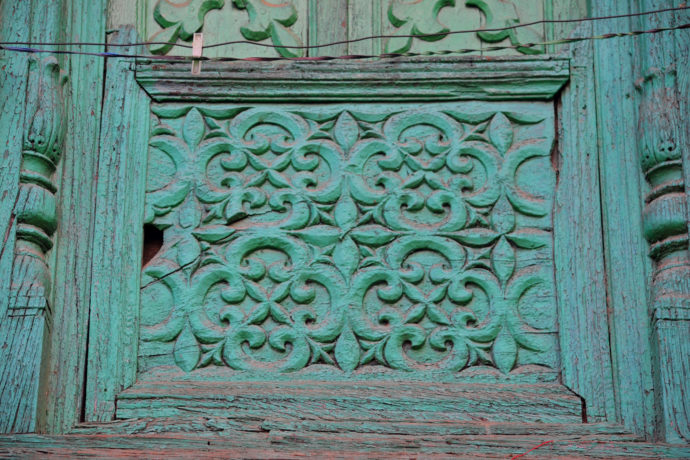
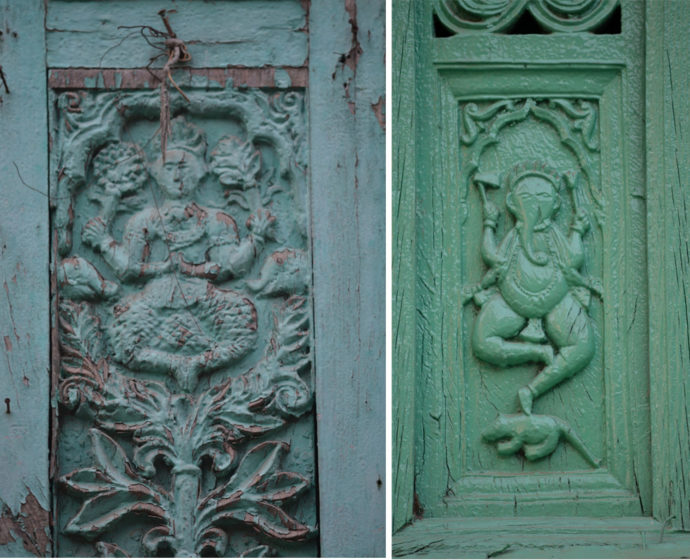
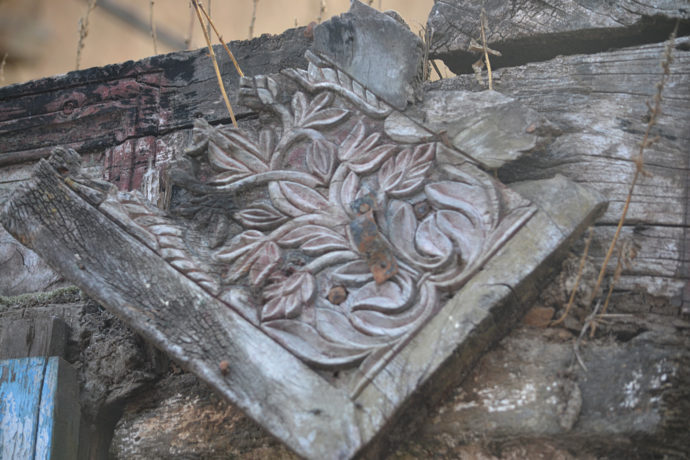
I was sorely tempted to work this fragment free and take it as a souvenir.
Addendum
While in Delhi at the end of my India journey, I visited the National Handicrafts and Handlooms Museum, known generally as the National Crafts Museum. Besides extensive holdings of amazing textiles, it’s grounds are composed of compounds of indigenous domestic architecture with appropriate paintings and/or carvings. Unfortunately labeling was scant at best. But it did offer one elaborately carved wooden doorway, perhaps the type that once would have been found in Almora.
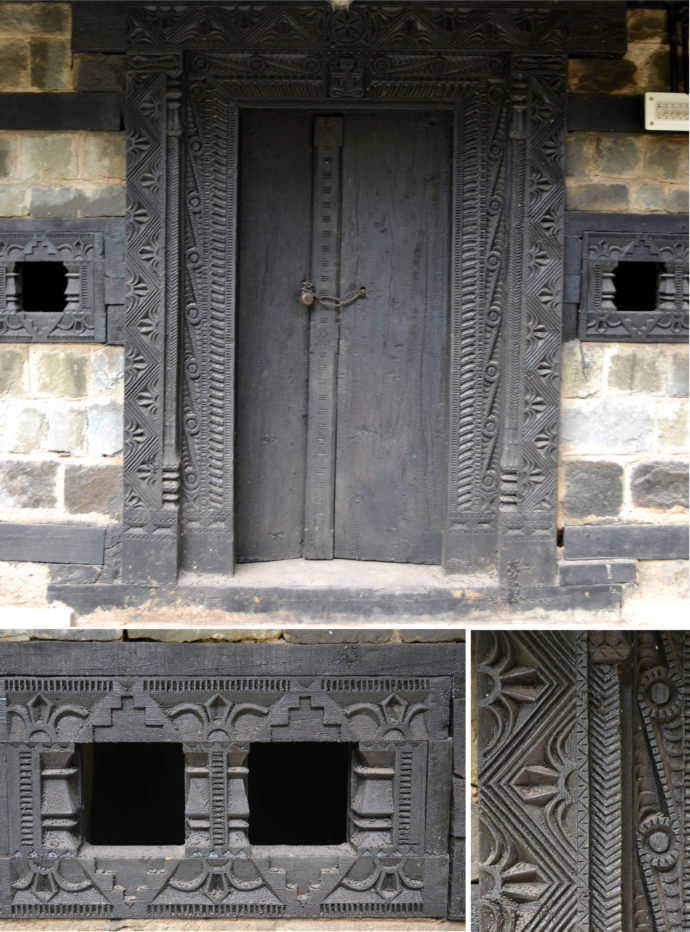
After lunch at the museum’s fine restaurant Cafe Lota, I explored the grounds further and came upon artists exhibiting their Pattachitra and Warli paintings. I was familiar with Pattachitra because I took a brief class in this colorful depiction of Hindu dieties during my PECAH residency. But Warli work from the Western Indian state of Maharashtra was new to me. It’s strikingly similar to Aipan in that the dark ground–often red ochre or black–is laid down first. Then the design–of stick figures engages in every-day, ceremonial or mythic activities in Warli work–is applied on top with opaque white paint made with a paste of rice and water. It was closing time, but guards allowed me to bargain for one of the smaller Warli paintings of a river scene below and a peacock as big as a tree above.
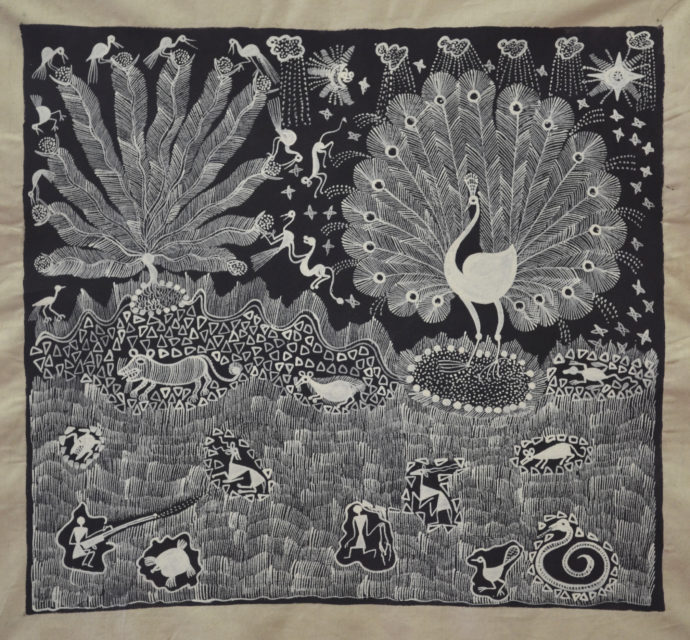
Dhaku Vittah Kadu and Mangesh Dhaku Kadu, untitled, Warli painting on cotton cloth, 2015, 40 x 43 cms.
Trackback URL: https://www.scottponemone.com/facades-of-almora-carved-survivors/trackback/


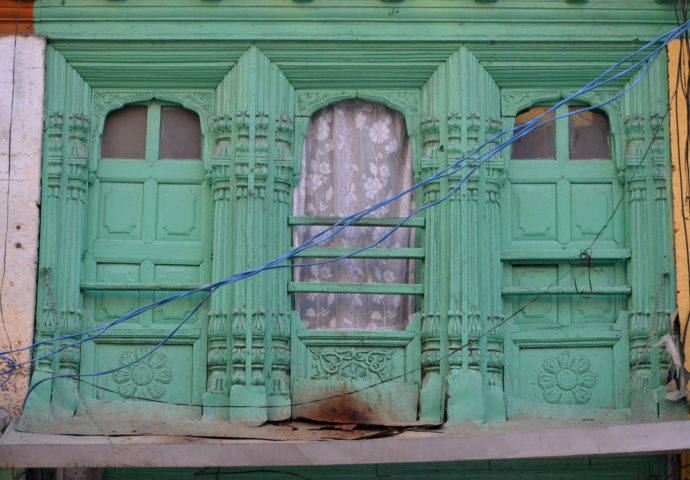










Yeah ,you made my day . Beautiful photos. I spend almost 25 years in almora .chowk bazar , malli bazar, Lala bazar , johri bazar all are in your photos.
Thanks for sharing.
Scott, very interesting post as always. It brings back nice memories. Beautiful images of the wood details. It makes me miss India!